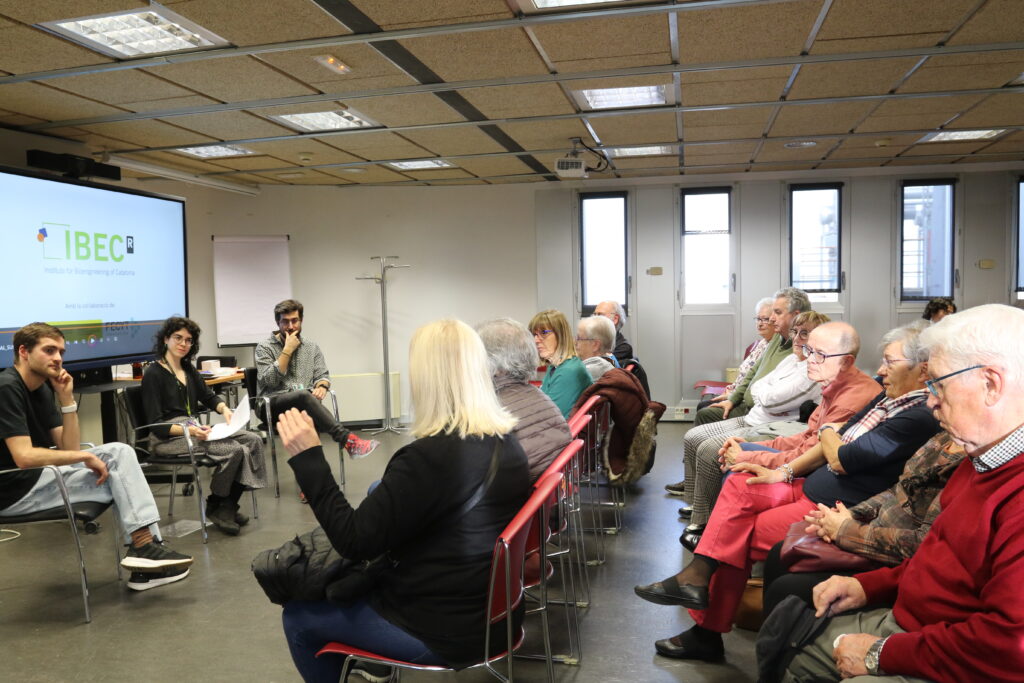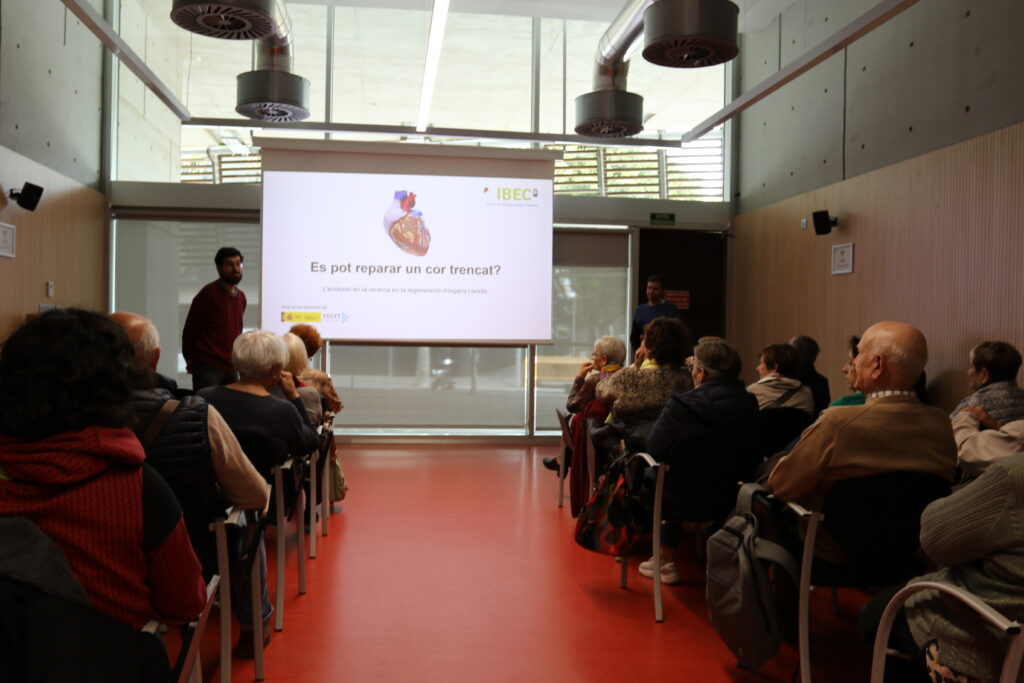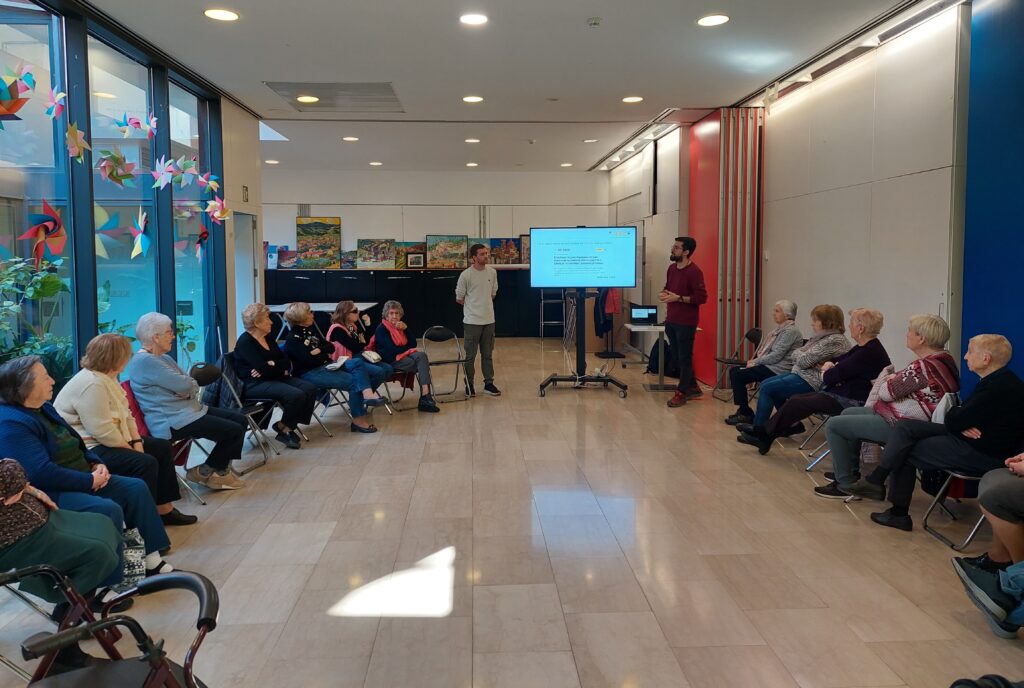In the frame of IMAB, an outreach project developed at the Institute for Bioengineering of Catalonia (IBEC) in Barcelona, Marcel Sorribas brought B-BRIGHTER project closer to over-65s.

Most science popularisation projects and outreach activities are oriented to children, families, or adults in general, leaving out an important part of the population: senior people over 65 years old. To reach this target audience, IBEC, with funding from the Spanish Foundation for Science and Technology (FECYT), developed the IMAB project: Involving the Senior Community in Advances in Bioengineering for Health and Healthy Aging (for its Spanish acronym).
The IMAB project aims to engage individuals over 65 in learning about, understanding, and expressing their opinions on the latest research in bioengineering for active aging. The objective is to bring scientific advances, gather opinions, and address the need to disseminate scientific knowledge to this age group. This initiative has been conducted in collaboration with adult education centers, community centers, associations, and university extension classes.
The materials were adapted to enhance visual and auditory comprehension. To foster discussion, fictitious patient cases were used, allowing participants to openly discuss various scenarios, and to overcome travel constraints and ensure inclusive participation, activities were held at community centers. During these workshops, participants also had the opportunity to discuss ethical issues related to organ and tissue regeneration research. It is worth highlighting that activities were designed taking into account functional diversity aspects and encouraging the participation of different sectors of society.
Several IBEC researchers took part in this initiative, covering topics from basic biological concepts to organ bioprinting, where Marcel Sorribas could take part in three sessions from February to April and talk about 3D bioprinting and B-BRIGHTER project.
He talked about the regeneration of organs and tissues, mainly by 3D bioprinting. He explained what a cell is, and how can researchers construct a human organ in the laboratory. He could give details about his work on B-BRIGHTER related to synthesizing skin and intestine and stimulated interested and fruitful discussions among the public and the researchers.



Some data summarizing the whole activity
– 18 sessions were held, bringing together 295 participants with an average age of 76 (76% of them women)
– 89% would accept a heart bioprinted in the laboratory, and 97.9% would accept a dressing made from embryonic cells.
– 95.7% would agree to donate cells to a biobank, and of these, 49.1% would like to be informed about how their cells will be used.
A report with the results will be shared soon with the scientific community to provide insights into the public’s opinions and perspectives related to the senior public.
By creating educational and reflective spaces and adapting resources to individual needs, the goal of the project was not only to share knowledge but also to generate meaningful dialogue, thus contributing to a more informed and involved community in scientific issues.
